Film Noir the Dark Side of Cinema XXII
22 is a lucky number for noir: D.A. Humphrey Bogart defies Murder Incorporated in The Enforcer. Sexpot Carol Ohmart lures Tom Tryon into a web of crime in the VistaVision The Scarlet Hour. And thieves try to slip through interstate roadblocks carrying millions in gold bullion in the fascinating Plunder Road, in Regalscope. It’s a good selection of 1950s noir titles made by both old pros and a creative independent, covered with expert commentaries by Alan K. Rode and Jeremy Arnold.
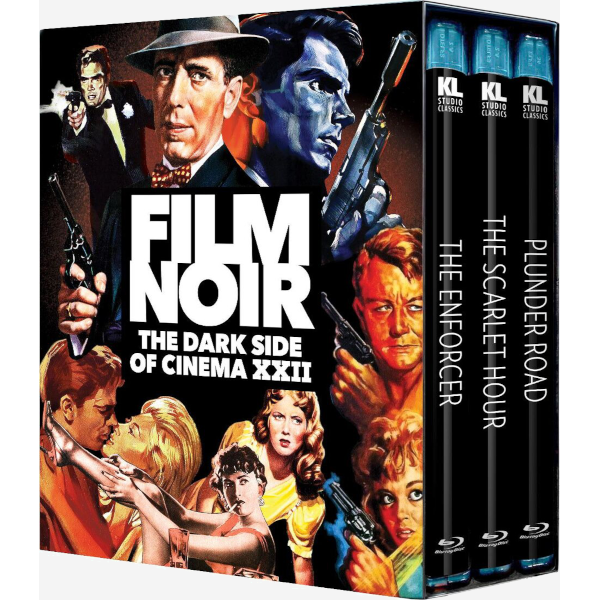
Film Noir the Dark Side of Cinema XXII
Blu-ray
KL Studio Classics
1951-1957 / B&W / Street Date October 29, 2024 / available through Kino Lorber / 49.95
Starring: Humphrey Bogart, Zero Mostel, Ted de Corsia; Carol Ohmart, Tom Tryon, Elaine Stritch; Gene Raymond, Jeanne Cooper, Wayne Morris.
Directed by Bretaigne Windust; Michael Curtiz; Hubert Cornfeld
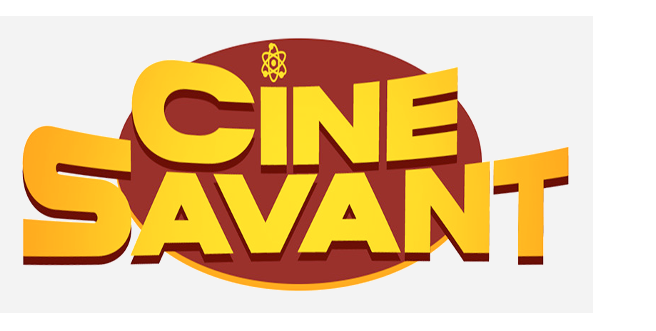 The lineup for the 22nd iteration of Kino’s Film Noir the Dark Side of Cinema stacks classy thrillers from the Paramount-Viacom vaults, one studio production and two acquisitions under the Melange label, a holding company for pictures in the Republic Pictures library.
The lineup for the 22nd iteration of Kino’s Film Noir the Dark Side of Cinema stacks classy thrillers from the Paramount-Viacom vaults, one studio production and two acquisitions under the Melange label, a holding company for pictures in the Republic Pictures library.
Exciting actors are here, with good turns from Humphrey Bogart, Carol Ohmart, Zero Mostel and even the legendary Elaine Stritch. The selection spans the 1950s, starting with a studio-filmed thriller from the Truman years and ending with an expressive independent filmed on the fly and presented in anamorphic Regalscope.
The titles can also claim bona fide Noir credibility. The VistaVision The Scarlet Hour is a domestic premiere on Blu, after an initial Australian pressing from [Imprint]. The semi-classic The Enforcer and the idiosyncratic Plunder Road saw Blu-ray releases from Olive Films in 2013. Both have been remastered from 4K scans.
The Enforcer
1951 / 1:37 Academy / 85 min.
Starring: Humphrey Bogart, Zero Mostel, Ted de Corsia, Everett Sloane, Roy Roberts, Michael Tolan, King Donovan, Robert (Bob) Steele, Adelaide Klein, Don Beddoe, Tito Vuolo, John Kellogg, Jack Lambert, Susan Cabot, Creighton Hale, Patricia Joiner.
Cinematography: Robert Burks
Art Director: Charles H. Clarke
Film Editor: Fred Allen
Original Music: David Buttolph
Written by Martin Rackin
Produced by Milton Sperling
Directed by Bretaigne Windust
Frank Capra once came pretty close to defining the bitter side of Film Noir: he complained that the public no longer wanted his kind of movies, and instead preferred unhealthy, ugly and violent entertainment like Kiss of Death. The success of 1949’s White Heat opened a new vein of brutal criminal activity, notably James Cagney in Kiss Tomorrow Goodbye and Steve Cochran in Highway 301.
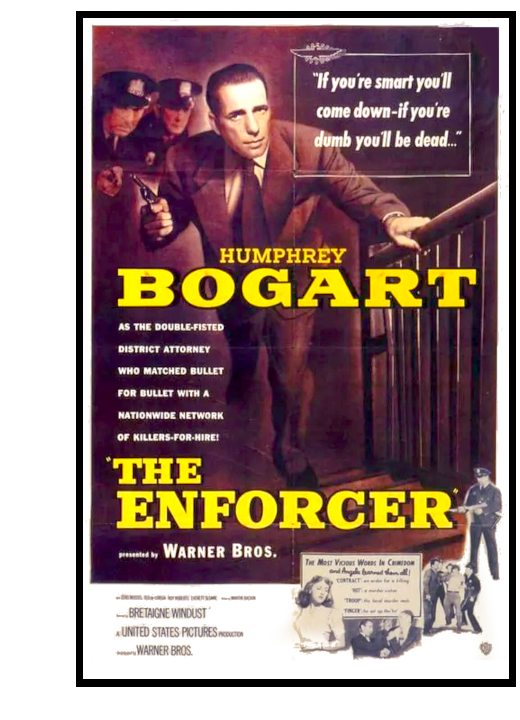
Following this trend, The Enforcer is so preoccupied with criminal violence that it does without a romantic subplot entirely. It was Humphrey Bogart’s last picture released by Warners. Bogie is present for the opening and the closing scenes, but the bulk of the story is carried by a choice selection of class-A villains.
The film is set in contemporary 1950 yet the cops don’t recognize the terms ‘contract’ and ‘hit man.’ They are shocked to learn about a criminal organization that kills for hire. One might think the show had been written years earlier, but Alan K. Rode’s expert commentary explains how the screenplay was developed from recent events. Rode also nixes a rumor that Raoul Walsh directed the movie uncredited. Walsh may have helped here and there, but Bretaigne Windust did serve as the full-time director.
District Attorney Martin Ferguson (Humphrey Bogart) and Police Captain Frank Nelson (Roy Roberts) can’t keep witnesses alive to testify against Albert Mendoza, the head of Murder, Inc. (Everett Sloane). When hood/witness Joseph Rico (Ted de Corsia) panics at the last minute, Martin recalls the fates of his other key witnesses: wheel man Big Babe Lazick (Zero Mostel), trigger man Duke Malloy (Michael Lawrence Tolan), and prospective victim Angela Vetto (Susan Cabot). The organization has eliminated one witness after another, leaving Martin only a few hours to put a new case together.
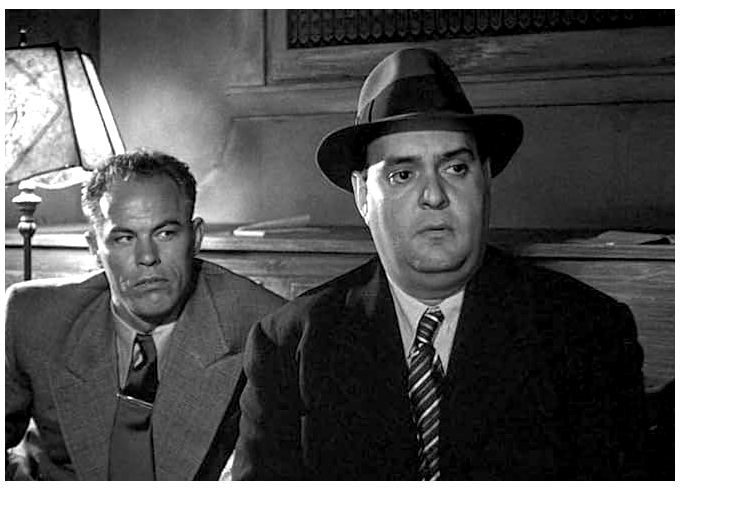
The Enforcer shows the Production Code more willing to pass brutal content, as long as it isn’t too direct or graphic. A contract killer who loses his gun is told to finish his assignment with an ice pick. A too-nervous hit man is deemed a liablility, and eliminated. The diabolical Mendoza lines up his clients for future blackmail purposes. Dialogue bites give him the arch-villain status of a ‘Doctor Mabuse’ figure. The show ably dramatizes the criminal outrages, but the Production Code won’t let Organized Crime be described for what it was, systematic corruption that included police departments and government institutions.
Bogart gives an excellent straight performance devoid of vanity posturing. Second-billed Zero Mostel is the terrorized Lazick, abused by both the cops and his gangster superiors. Mostel was blacklisted just as The Enforcer was going into release, interrupting his big-screen career. Equally good is Ted de Corsia, the memorable villain of Jules Dassin’s classic The Naked City. De Corsia’s thug Rico forces a barber to help him cut a man’s throat with a straight razor. The accumulation of violent scenes gives a genuine sense of anxiety to the finale, when two young women are targeted for execution. Actresses Susan Cabot and Patricia Joiner perform without screen credit.
Although originally released by Warner Bros., The Enforcer was an independent production by Milton Sperling, to whom rights eventually reverted. It was filmed by Robert Burks, who would proceed to Strangers on a Train and become Alfred Hitchcock’s cameraman of choice. Some scenes express a classic Warner Bros. ‘gangstah’ vibe — sinister shadows of men with guns play out across those familiar old standing sets.
The 2022 remaster for The Enforcer is clean and sharp; Robert Burks’ cinematography uses shadows and fog to disguise the fact that many night exteriors were filmed right on the Warner lot. The audio track gives David Buttolph’s music score that signature brassy Warners feel.
Repeated from an [Imprint] disc is an excellent audio commentary. Author and historian Alan K. Rode has thoroughly researched hundreds of noir productions and the talent that filmed them. He describes a chain of screenplay treatments by numerous writers, until Martin Rackin’s idea of a murdered female witness became the glue to hold the show together. We also learn that the film’s planned director was Felix Feist, who left for another assignment. The unfamiliar Bretaigne Windust was a successful Broadway director.
The disc menus for the set carry American advertising art, but the box graphics use vintage European posters. The beautiful Italian art for The Enforcer shows an ‘Amazing Colossal’ Humphrey Bogart towering over city skyscrapers, carrying a beautiful blonde.
The Scarlet Hour
1956 / 1:85 widescreen / 95 min.
Starring: Carol Ohmart, Tom Tryon, Jody Lawrance, James Gregory, Elaine Stritch, E.G. Marshall, Edward Binns, David Lewis, Billy Gray, Jacques Aubuchon, Scott Marlowe, Nat ‘King’ Cole, Richard Deacon, Benson Fong, Theron Jackson, Almira Sessions.
Cinematography: Lionel Lindon
Art Directors: Hal Pereira, Tambi Larsen
Costumes: Edith Head
Film Editor: Everett Douglas
Original Music: Leith Stevens
Screenplay Written by Rip Van Ronkel, Frank Tashlin, John Meredyth Lucas, story by Ronkel & Tashlin
Produced and Directed by Michael Curtiz
Producer-director Michael Curtiz looks at Southern California, where sex and money lead to trouble under sunny skies. The late-’50s real estate boom allows the newly affluent to enjoy a lifestyle previously reserved for movie stars: hilltop views, swimming pools and drinks at the Beverly Hills Hotel. But the storyline of The Scarlet Hour is not as up to date — it feels like a reworking of The Postman Always Rings Twice.
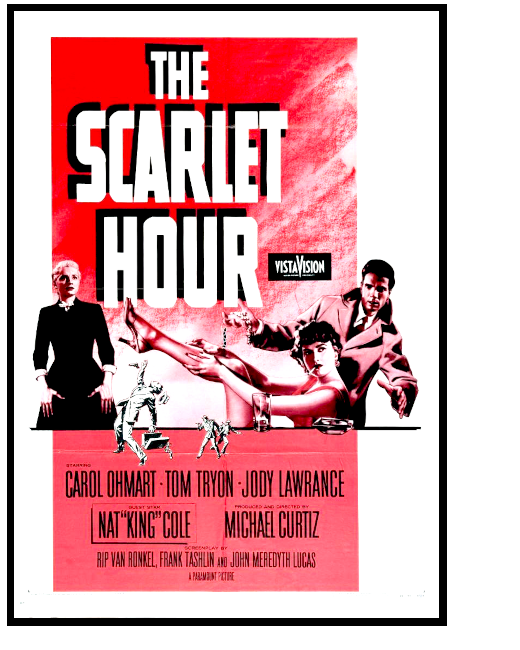
Real estate entrepreneur Ralph Nevins (James Gregory) has a flourishing business and a terrace house in Los Feliz, but is unaware that his gorgeous trophy wife Paulie (Carol Ohmart) is having a torrid affair with his top salesman ‘Marsh’ Marshall (Tom Tryon). Paulie’s ambition is to ditch Ralph but retain the plush lifestyle his money affords. A crooked opportunity presents itself one night on a Mulholland Drive lover’s lane: the adulterers witness some crooks (Jacques Aubuchon & Scott Marlowe) planning to heist jewelry from a swank hilltop house. Using her unknowing best friend Phyllis Rycker (Broadway star Elaine Stritch) as an alibi, Paulie positions Marsh to waylay the thieves. But jealous hubbie Ralph crashes the scene just as the criss-cross crimes go down.
The resulting mess creates a puzzle for detectives Jennings and Allen (E.G. Marshall & Edward Binns). They become interested in Paulie and Marsh partly because Nevins’ office assistant (and secret admirer) Kathy Stevens (Jody Lawrance) gives them an alibi for Marsh before they can ask for one. Then Paulie is confronted in her swimming pool by the thieves’ senior partner, the epicurian Dr. Sam Lynbury (David Lewis). He demands that she hand over the loot or else.
Some of the crime details seem unlikely, but Michael Curtiz directs with his usual assurance. Although much of Scarlet Hour re-shuffles too-familiar thriller elements, the chaotic gunfight at the hilltop house is particularly exciting.
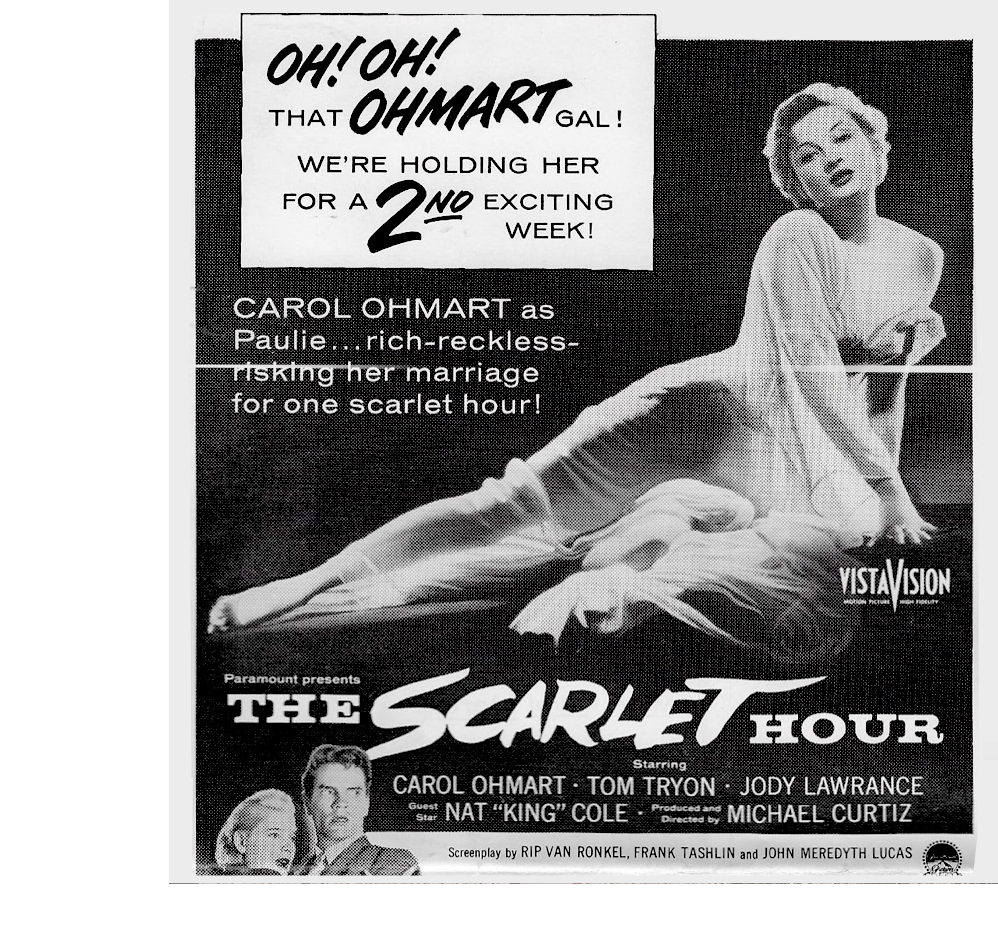
Michael Curtiz had a track record as a star-maker, and Scarlet Hour promotes three promising newcomers. A big advertising push was afforded Carol Ohmart as a new sex symbol, but the Production Code allows Paulie to exercise her allure mainly by applying lipstick and straightening her nylons. We like Tom Tryon but he’s an unfortunate weak link. Marsh’s hangdog attitude makes us wonder why it takes the cops so long to tag him out. He also doesn’t seem aggressive or dangerous enough to make the thieves cower. The dealbreaker with the audience is a lack of sex chemistry between Ohmart and Tryon.
The only wholly innocent character on view is Jody Lawrance’s Kathy Stevens, and we can tell that she has no future with Marsh. James Gregory’s cuckolded husband is more sympathetic, as Paulie’s caustic behavior more than invites his abuse.
The ‘criminal mastermind’ Dr. Lynbury feels out of place, with his dapper dress and patrician manner. In his first movie, actor David Lewis (‘Mr. Kirkeby’ in The Apartment) plays as if channelling the spirit of Clifton Webb from the classic Laura and The Dark Corner. Lynbury even carries a cane.
One big reason to see the show is a rare film appearance by the Broadway legend Elaine Stritch. A sort of Eve Arden for Paulie, Phyllis thinks she’s providing an alibi for a romantic rendezvous, not a jewelry hijack. Ms. Stritch communicates a fresh personality; she never seems to be reciting words from a script page. All who see the documentary Elaine Stritch: Just Shoot Me fall in love with her.
A glossy production compensates for Scarlet Hour’s lack of noir fireworks. Everything is captured in crystal clear B&W VistaVision. While Ohmart and Stritch sip cocktails in the Beverly Hills Hotel’s Crystal Room, Nat King Cole warbles Jay Livingston & Ray Evans’ melodic hit tune ‘Never Let Me Go.’ Too bad Marsh and Paulie’s romance doesn’t have a ‘never let me go’ quality.
Paramount dropped its big publicity push for Carol Ohmart the moment she didn’t become a new Marilyn Monroe. Her most memorable performance remains her brassy, abusive wife for Vincent Price in the horror classic House on Haunted Hill. From then on it’s mostly TV work, and the bizarre, semi-obscure Jack Hill horror feature Spider Baby.
The Scarlet Hour is an immaculate transfer. We immediately note the superior VistaVision format, with its extra sharpness and deep focus, even in night-for-night scenes. VistaVision ran 35mm film sideways through the film gate, exposing a much larger image area; Paramount’s HD master is in near perfect condition. Nat King Cole’s performance feels like a time machine trip to a summer night in Beverly Hills. If only every older movie were in condition as good as this.
Also from an earlier foreign disc is a commentary by Alan K. Rode, the biographer of director Michael Curtiz. Rode’s talk covers all bases, offers good anecdotes about colorful personalities, and gets very specific about Curtiz’s involvement. A fringe benefit for Los Angelenos is Rode’s recitation of scores of filming locations, right down to street addresses.
Plunder Road
1957 / 2:35 widescreen / 72 min.
Starring: Gene Raymond, Jeanne Cooper, Wayne Morris, Elisha Cook Jr., Stafford Repp, Steven Ritch, Nora Hayden, Paul Harber, Don Garrett, Michael Fox.
Cinematography: Ernest Haller
Production Designer & Titles: Bob Gill
Visual Effects: Louis DeWitt, Jack Rabin
Film Editors: Warren Adams, Jerry S. Young
Original Music: Irving Gertz
Screenplay by Steven Ritch, story by Ritch & Jack Charney
Produced by Leon Chooluck, Laurence Stewart
Directed by Hubert Cornfield
Everybody likes elaborate, daring heist movies. The caper thriller Plunder Road is a fairly unique item, a ‘director’s film’ that shows an artistic sensibility at work. Hubert Cornfield’s film career was uneven, but he always seemed to be trying something different. The production company Regal Films generated low budget CinemaScope movies for Fox, dubbed ‘Regalscope’ in the credits.
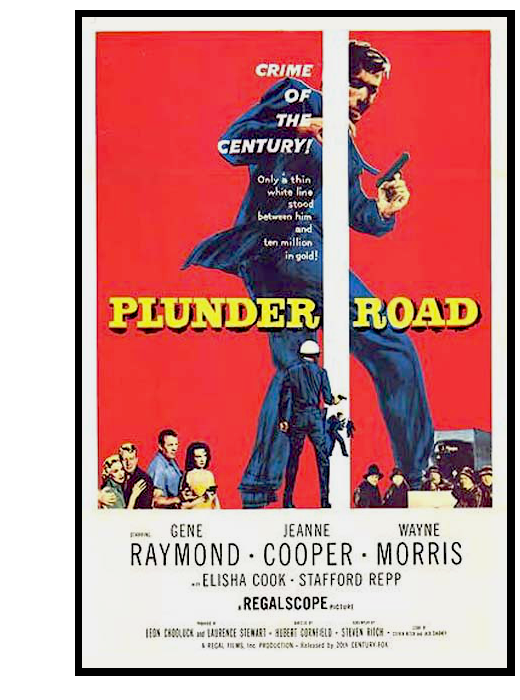
This heist caper strips the concept down to its bare essentials. Five men in blank-faced masks stop a freight train on a rainy night and use a crane to unload boxes containing gold ingots. They then divide the cargo into three trucks, and split up to make separate low-key getaways. The ringleader is Eddie Harris (’30s light comedy star Gene Raymond). His thief-cohorts are Roly Adams (Stafford Repp of TV’s Batman), ex- racecar driver Frankie Cardo (Steven Ritch, also the film’s screenwriter), explosives expert Skeets Jonas (eternal loser Elisha Cook Jr.) and ex- stunt man ‘Commando’ Munson (former leading man Wayne Morris). The five plan to bluff their way through police roadblocks to a boat waiting in San Pedro Harbor, south of Los Angeles.
Plunder Road starts in medias res and maintains a nice sense of existential detachment — the thieves must endure a gnawing, present-tense fear that arrest is imminent. Obvious similarities connect Plunder Road to H.G. Clouzot’s suspense classic The Wages of Fear: explosives expert Skeets tends a charge of unstable nitroglycerin suspended on shock-absorbing springs. The aura of failure around Skeets is so strong that we wonder why Commando is willing to drive with him. The irony is that Skeets proves to be the only one of the five who doesn’t screw up royally.
The thieves are observed with an emotional detachment that makes them look like mice in a maze of their own making. Each is hoping for ‘a big score’ to give them a second chance in life. Nervous Frankie Cardo has been blackballed from car racing. Skeets has lost his wife and daydreams of Rio, where he can ‘walk on sidewalks made of colored mosaics.’ Nice-guy Commando is too old for Hollywood work; the answer for him is ‘finding one thing and sticking to it.’ The calming influence Eddie Harris is convinced that his clever gold-smuggling scheme cannot fail.
Eddie’s loving girlfriend Fran Werner (Jeanne Cooper of The Intruder) is willing to roll the dice on his all-or-nothing long shot. The only other woman in the picture is an engaging truck stop waitress who gives Eddie an extra-big smile. She’s Nora (Naura) Hayden, the sparkling redhead best known from the Sci-fi attraction The Angry Red Planet.
The presence of Elisha Cook reminds us of Stanley Kubrick’s The Killing, which seems another key influence on this picture. The annoying old lady at the airport in Kubrick’s movie has an equivalent in Plunder Road, a freeway driver who doesn’t look where she’s going.
Author Ian Fleming had a habit of lifting ideas for his 007 books from classic noir thrillers. Fleming’s 1959 novel Goldfinger observes that gold bllion is so heavy, a single truck can’t carry very much. With that in mind, we would think that our highway system’s weighing stations would easily foil Eddie’s ‘foolproof’ getaway plan. But Fleming’s most blatant ‘borrowing’ from this Cornfield movie is Eddie’s fanciful method of smuggling pure gold in a Cadillac sedan. The idea is too exciting to be nixed over a little thing like practicality.
Plunder Road raises the concept of fate in film noir to cosmic dimensions. Unlike many caper pictures, Eddie’s master plan runs like clockwork. When things go wrong, it’s because of stupid mistakes, some of them linked directly to Eddie’s supposed safeguards. Tip to heisters: any crook who expects the L.A. freeway system to cooperate with a getaway plan is a fool begging for trouble. The iconic image of a jammed freeway expresses the cruelly comic nature of fate: after all that planning and backbreaking work, any ambition can be undone in just a few seconds. Cornfield’s movie could be retitled Pocketful of Losers.
Plunder Road appears to be the only title of the three premiering a new transfer. It looks like an improvement over the old Olive Films master, with a tad better contrast. The title sequence still has some speckling, which may have been part of the optical. But the show overall is cleaner. Much of the first reel appears to be an optical dupe to superimpose a rain effect, but we can’t see a generational loss. We were very happy to finally see this show in full widescreen, after watching pan-scanned TV prints (and a VHS tape) for so long.
Cornfield imparts an artistic feel to the picture, even if much of it plays out as two-shots in truck cabs. Holding the show back somewhat is a conventional music score by Irving Gertz; something more avant-garde might have made a big difference. With so many wordless scenes, the show was a waiting canvas for any composer.
Jeremy Arnold’s audio commentary explains much about the odd production. Director Hubert Cornfield, was a graphic designer whose first film jobs were in advertising. Arnold stresses the film’s visual qualities, especially geometric patterns that persist from shot to shot. He also explains the rather sneaky Regal Films production setup. The credits identify the movie as a Regal Films production, but the copyright is to 20th Fox. Regal was stealth-headed by Robert Lippert, who had been ostracized from the industry by the guilds, and couldn’t put his name on anything.
Do you love movies with vintage views of Hollywood? One shot at 53:20 shows a perfect view of Highland Avenue, and the building that later housed the final location of a favorite haunt, Aaron’s records.
A lack of painted road lines tells us that the final sequence was partly filmed on an incomplete section of new roadway. Second-unit shots of trucks in motion were filmed out on the open highway, but other ‘country roads’ have concrete curbing, indicating that they were probably filmed inside Los Angeles’ sprawling Griffith Park.
The KL Studio Classics Blu-ray of Film Noir the Dark Side of Cinema XXII puts new life into the series, which has pretty much tapped every B&W Universal title that could be construed as semi-noir. Licensing the libraries of Paramount / Viacom has yielded some really good discoveries.
The superior audio commentaries are the only extras, save for a trailer for The Enforcer.
Reviewed by Glenn Erickson

Film Noir the Dark Side of Cinema XXII
Blu-ray rates:
Movies: Enforcer Excellent; Scarlet Good++; Plunder Excellent
Video: Excellent
Sound: Excellent
Audio Commentaries:
Alan K. Rode on The Enforcer and The Scarlet Hour
Jeremy Arnold on Plunder Road
Trailer for The Enforcer.
Deaf and Hearing-impaired Friendly? YES; Subtitles: English (feature only)
Packaging: One Blu-ray in Keep case
Reviewed: November 14, 2024
(7227noir)
Visit CineSavant’s Main Column Page
Glenn Erickson answers most reader mail: cinesavant@gmail.com
Text © Copyright 2024 Glenn Erickson

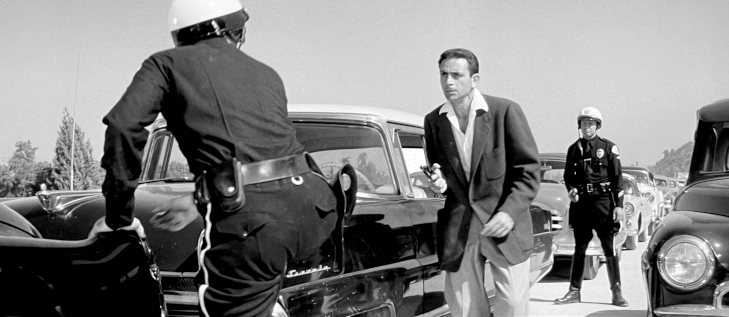

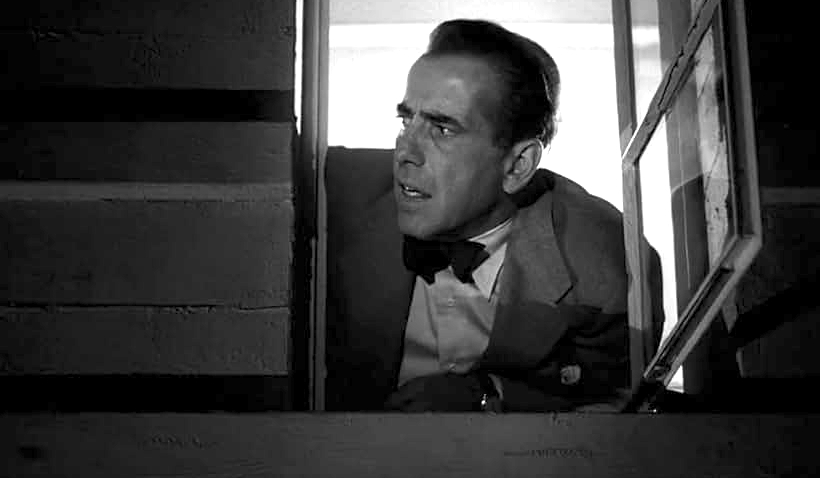
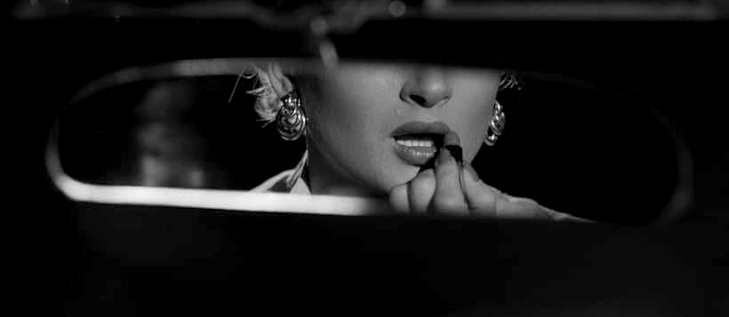
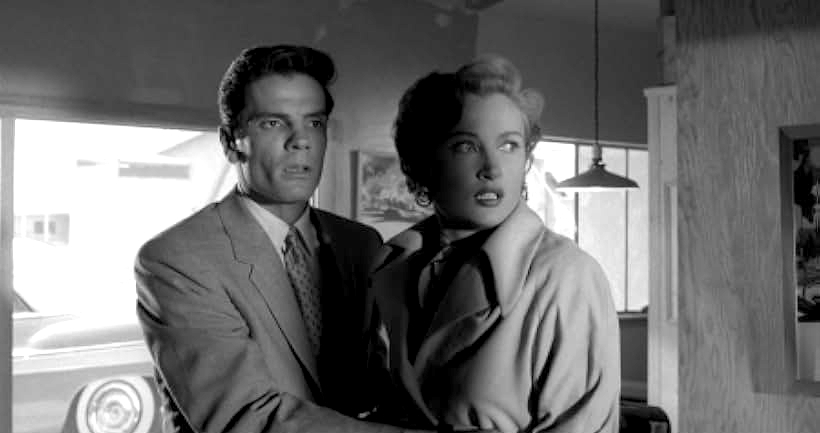
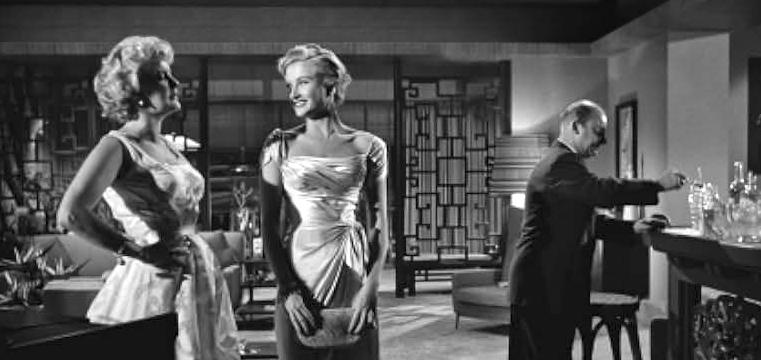
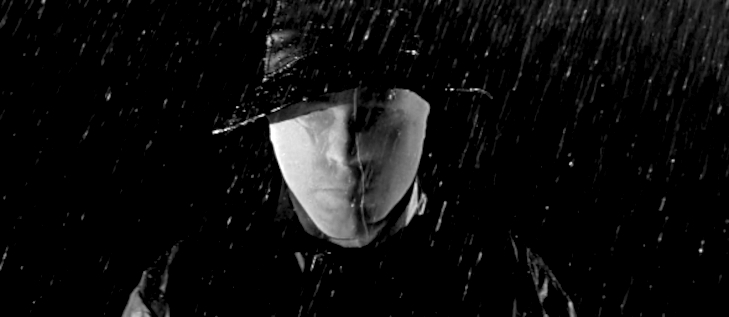
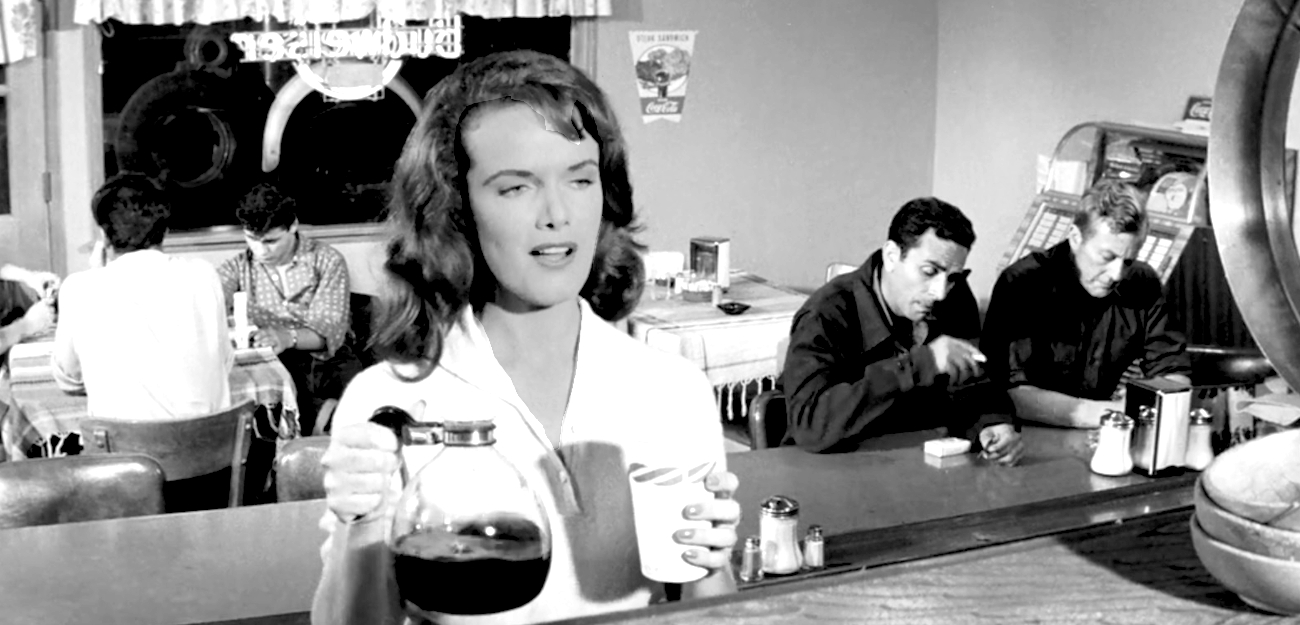

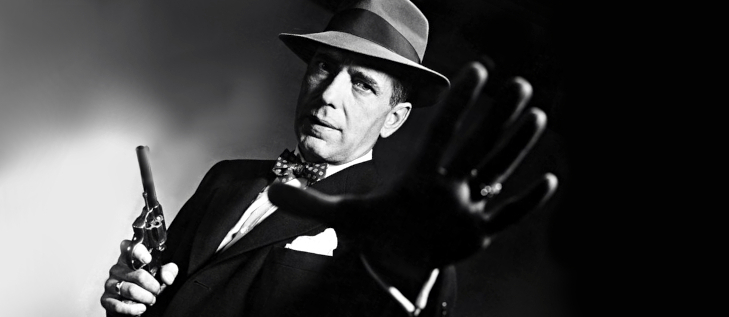


These all look great!!
[…] Sylvia Sidney’s star power shines in this one. When Kathleen smiles in the flower shop, our enchantment is total. Her unhappy face compels an emotional reaction, overriding the predictable storytelling. Second-billed, in his second movie, Gene Raymond has perfect collegiate good looks and a strong, if slightly passive screen presence. He’d be the leading man for a score of actress’s vehicles, notably Joan Crawford & Bette Davis. Raymond was a loving and loyal husband to Jeanette MacDonald; film noir aficionados admire his late-career starring role in Hubert Cornfield’s eccentric heist film, Plunder Road. […]